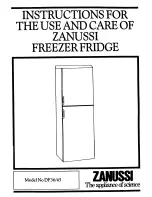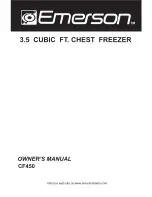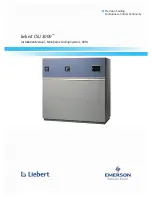
This appliance contains hydrocarbons in
its cooling unit; maintenance and
recharging must therefore only be
carried out by authorized technicians.
The accessories and parts of the
appliance are not suitable for washing in
a dishwasher.
Periodic cleaning
Caution! Do not pull, move or damage
any pipes and/or cables inside the
appliance.
Caution! Do not damage the cooling
system.
The equipment has to be cleaned regularly:
1. Clean the inside and accessories with lukewarm
water and some neutral soap.
2. Regularly check the door seals and wipe them
clean to ensure they are clean and free from
debris.
3. Rinse and dry thoroughly.
4. If accessible, clean the condenser and the
compressor at the back of the appliance with a
brush.
This will improve the performance of the appliance
and save electricity consumption.
Defrosting of the refrigerator
Frost is automatically eliminated from the evaporator of
the refrigerator compartment every time the motor
compressor stops, during normal use. The defrost water
drains out through a trough into a special container at
the back of the appliance, over the motor compressor,
where it evaporates.
It is important to periodically clean the defrost water
drain hole in the middle of the refrigerator compartment
channel to prevent the water overflowing and dripping
onto the food inside.
Defrosting of the freezer
Caution! Never use sharp metal tools to
scrape off frost from the evaporator as
you could damage it.
Do not use a mechanical device or any
artificial means to speed up the thawing
process other than those recommended
by the manufacturer.
About 12 hours prior to defrosting set a
lower temperature in order to build up
sufficient chill reserve in case of any
interruption in operation.
A certain amount of frost will always form on the freezer
shelves and around the top compartment.
Defrost the freezer when the frost layer reaches a
thickness of about 3-5 mm.
1. Switch off the appliance or pull out electrical plug
from the wall socket.
2. Remove any stored food, wrap it in several layers
of newspaper and put it in a cool place.
Caution! A temperature rise of the
frozen food packs during defrosting
may shorten their safe storage life.
Do not touch frozen goods with wet
hands. Hands can freeze to the
goods.
3. Leave the door open. Protect the floor from the
defrosting water e.g. with a cloth or a flat vessel.
4. In order to speed up the defrosting process, place a
pot of warm water in the freezer compartment. In
addition, remove pieces of ice that break away
before defrosting is complete.
5. When defrosting is complete, dry the interior
thoroughly. .
6. Switch on the appliance and close the door.
7. Set the temperature regulator to obtain the
maximum coldness and run the appliance for two
or three hours using this setting.
Only after this time put the food back into the freezer
compartment.
Periods of non-operation
When the appliance is not in use for long periods, take
the following precautions:
1. Disconnect the appliance from electricity supply.
2. Remove all food.
3. Defrost the appliance (if necessary).
4. Clean the appliance and all accessories.
5. Leave the door/doors open to prevent unpleasant
smells.
20
















































